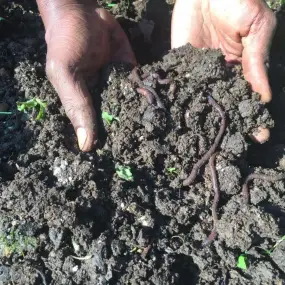Modern industrial agriculture simply cannot sustain human populations for generations to come. Its negative impacts include soil loss and degradation, greenhouse gas emissions, pollution by pesticides and fertilisers, loss of biodiversity, declining pollinators as well as risks to human health. For these reasons, and to ensure economic viability into the future, many farmers are making the transition to sustainable farming techniques. But how does one begin the transition?
Firstly, what is sustainable farming?
GreenBiz.com provides a comprehensive description:
“Sustainable farming is a management-intensive method of growing crops at a profit while concurrently minimising negative impact on the environment, improving soil health, increasing biological diversity, and controlling pests.”
Sustainable agriculture focuses on long-term solutions instead of treating short-term symptoms,
- Economically – generating sufficient returns and providing an economic base for the surrounding community
- Ecologically – farming methods must be modelled on natural cycles
- Socially – incorporating viable community dynamics.
Key concepts for the transition to sustainable farming
Although there is no ‘one-size-fits-all’ approach to moving towards more sustainable farming techniques (since every farm has its own unique circumstances and challenges), there are some general principles that have worked well for many farmers.
Change your mindset
Sustainable farming requires a shift from a product-focused approach towards a more management-based strategy. Instead of competing with and fighting nature, you’ll be working with it. You’ll be doing things in new ways, but you won’t always see the results immediately. This can be frustrating at first, but, if you stick with your commitment, you’ll ultimately benefit from reduced inputs (and costs), greater yields and more profits.
Start with the soil
Your soil is the ‘grounding’ of your entire farm, both literally and figuratively. A healthy soil is one of the greatest enablers of more sustainable farming. Conduct a comprehensive soil test to identify the chemical, physical and biological properties of the soil and where these are out of balance.
Remedying the health of the soil can be done through:
- Better crop rotation – lengthening and diversifying your rotation patterns
- Reducing herbicide dosage rates
- Reducing chemical nitrogen applications
- Minimising soil disturbance
- Keeping living roots in the soil year-round
- Integrate livestock and adaptive grazing.
Once you have adopted these strategies, it’s advisable to re-test the soil on a regular basis to monitor your progress and adapt your plan where necessary.
Develop a natural pest management plan
Get to know the major pests that affect your farm. Study their life cycles and learn about the natural controllers that attack them. Consider how you can make your farm more attractive to these natural pest controllers and try to come up with creative solutions that don’t involve toxic pesticides.
Of course, there are many other factors to consider when moving towards sustainable farming, but starting with the soil and pest control is a good way to begin the transition. The process has to be sustainable for you, too; you can’t do everything at once! Remember, this is a long-term strategy, so take the transition step-by-step. Eventually, all the pieces of the puzzle will come together, and your farm will be set up to reap the rewards and serve sustainably for generations to come.
Consult the experts
Especially in the early years of transition, it’s advisable to hire a consultant to come up with your sustainable agriculture plan. At Zylem, we live and breathe soil health. As pioneers of sustainable agricultural practices in South Africa, our team is well-placed to get you started on the journey towards sustainability.
Contact us today to find out how we can apply our expertise to your unique circumstances: https://zylemsa.co.za/contact-us/.

About the Author: Alex Platt
Alex is Business Development Manager at Zylem. He’s inspired by the potential of regenerative farming and takes a special interest in the technology and products that are moving agriculture in a more sustainable direction.

